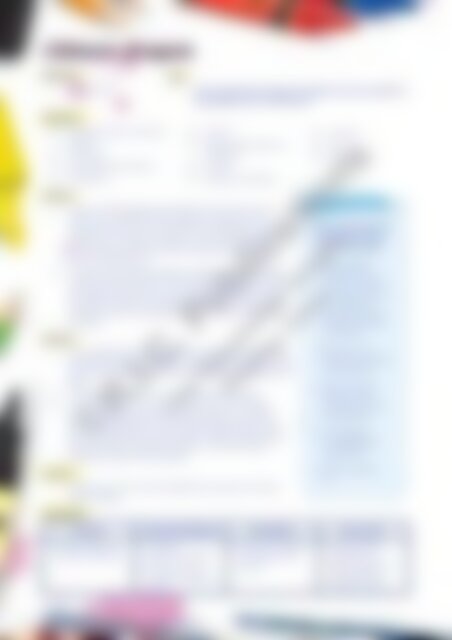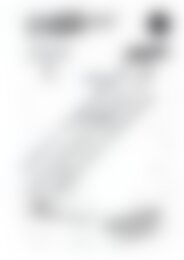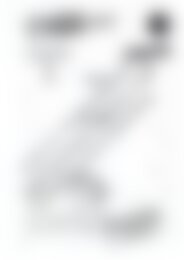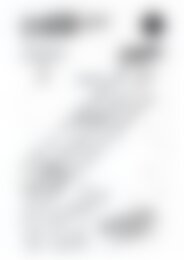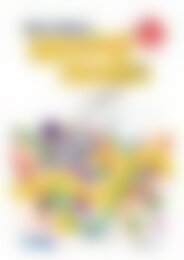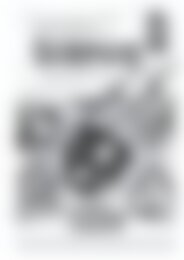RIC-6584 Exploring Visual Art (Upper)
Create successful ePaper yourself
Turn your PDF publications into a flip-book with our unique Google optimized e-Paper software.
Chinese dragon<br />
DURATION<br />
Three lessons<br />
TASK<br />
Draw a symmetrical image of a dragon’s face and complete it<br />
using bright colour combinations.<br />
Materials<br />
✓✓ reference pictures of Chinese<br />
dragons<br />
✓✓ litho paper<br />
✓✓ black permanent markers<br />
✓✓ lead pencils<br />
Lesson 2<br />
1. Once satisfied with their image, the students trace over the halfface<br />
with black permanent marker. They then flip the page over and<br />
trace the other side which should now be clearly visible through the<br />
paper.<br />
2. Unfold the paper to see the complete symmetrical image.<br />
3. Colour using warm or cool colour combinations for the larger<br />
sections of the face (warm: red, orange, yellow, pink; cool: blue,<br />
green, purple) and warm colours for the eyebrows, beard, mouth<br />
and nose. Students can use oil pastels or water-soluble crayons,<br />
which will need to be painted with water. This medium allows<br />
students to blend colours together.<br />
Lesson 3<br />
Carefully cut out the Chinese dragon’s face and glue onto black<br />
card for display.<br />
Evaluation<br />
TIPS FOR DRAWING<br />
<strong>Art</strong>s ideas <strong>Art</strong>s skills and processes <strong>Art</strong>s responses <strong>Art</strong>s in society<br />
• Develops ideas from<br />
reference materials.<br />
✓✓<br />
✓✓<br />
✓✓<br />
✓✓<br />
• Creates a<br />
symmetrical image.<br />
• Combines colours<br />
to achieve a specific<br />
effect.<br />
erasers<br />
water soluble crayons or<br />
oil pastels<br />
brushes<br />
water and containers<br />
LESSON 1<br />
1. Gather as many images as possible from books, the internet,<br />
clip art etc. of different Chinese dragons. Students will use<br />
these reference pictures to create their own drawing of a Chinese<br />
dragon’s face. Discuss the features of a Chinese dragon’s face<br />
(cat-like eyes, moustache, flame-like eyebrows, horns, teeth,<br />
colours, patterning etc.).<br />
2. To achieve the symmetrical aspect, students will fold their paper<br />
in half and draw only half of a Chinese dragon’s face. Ensure that<br />
the dragon’s mouth and nose are drawn on the fold line so that<br />
the image is doubled once the paper is folded out. (Otherwise, the<br />
students will have two separate halves of a face at either end of<br />
the page.)<br />
• Responds to images<br />
by making another<br />
artwork.<br />
✓✓<br />
✓✓<br />
✓✓<br />
scissors<br />
glue<br />
black card<br />
When drawing the face<br />
of any animal, follow<br />
these simple steps:<br />
• Sketch a light<br />
horizontal line to<br />
show the centre of<br />
the face. (It should<br />
run between the<br />
ears and eyes and<br />
through the middle<br />
of the nose.)<br />
• Sketch a line to<br />
show eyes, nose and<br />
mouth position.<br />
• Sketch the head<br />
shape and add<br />
the eyes, nose and<br />
mouth details.<br />
©R.I.C. Publications<br />
Low Resolution Images<br />
Display Copy<br />
• Add highlights<br />
or shading where<br />
shadows fall.<br />
• Add fur, feathers<br />
etc.<br />
• Recognises that<br />
artworks have<br />
different purposes<br />
and meanings in<br />
different cultures.<br />
18 <strong>Exploring</strong> visual arts www.ricpublications.com.au


